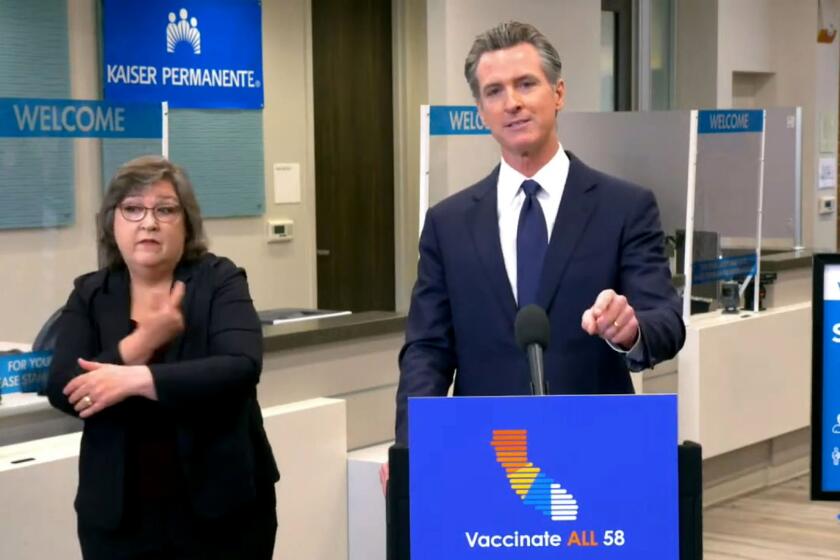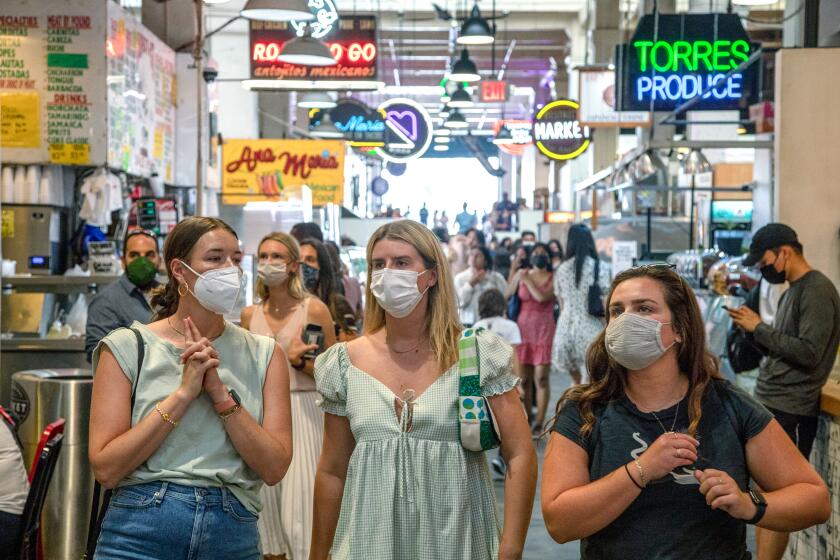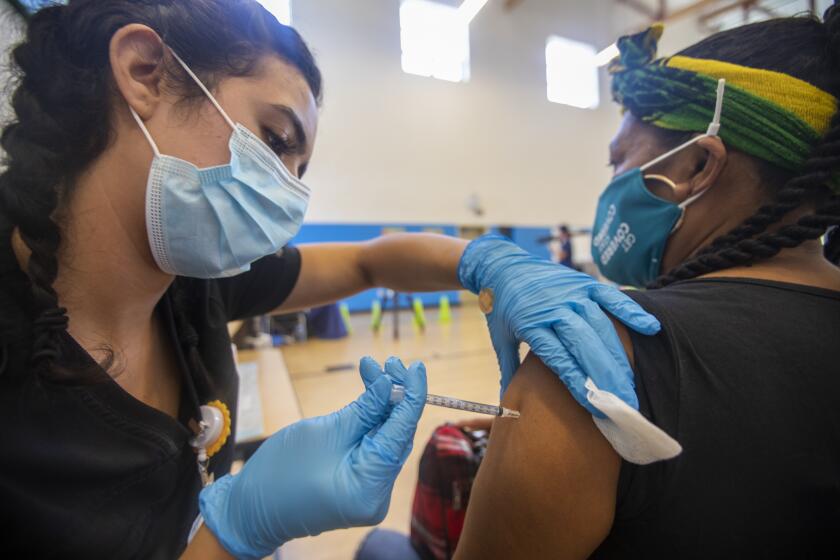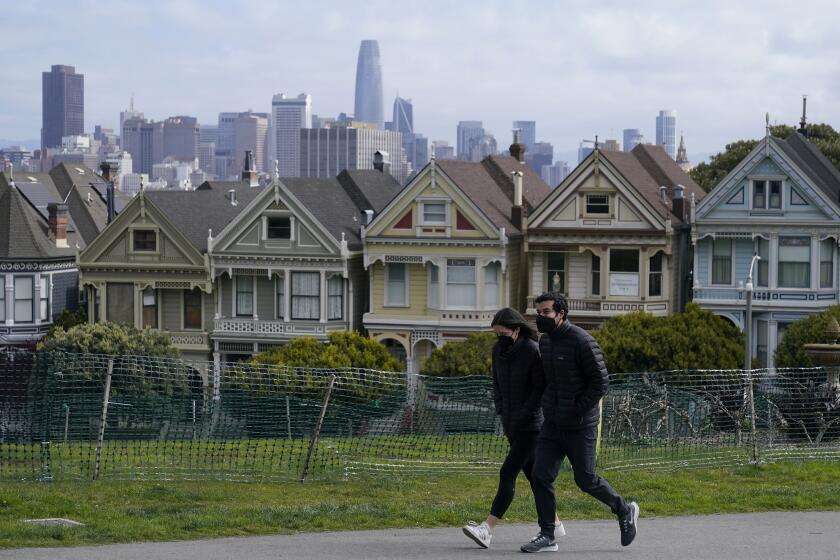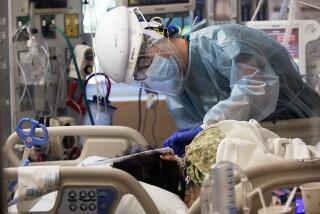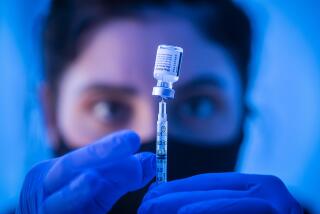California healthcare workers must be vaccinated by end of September under new health order
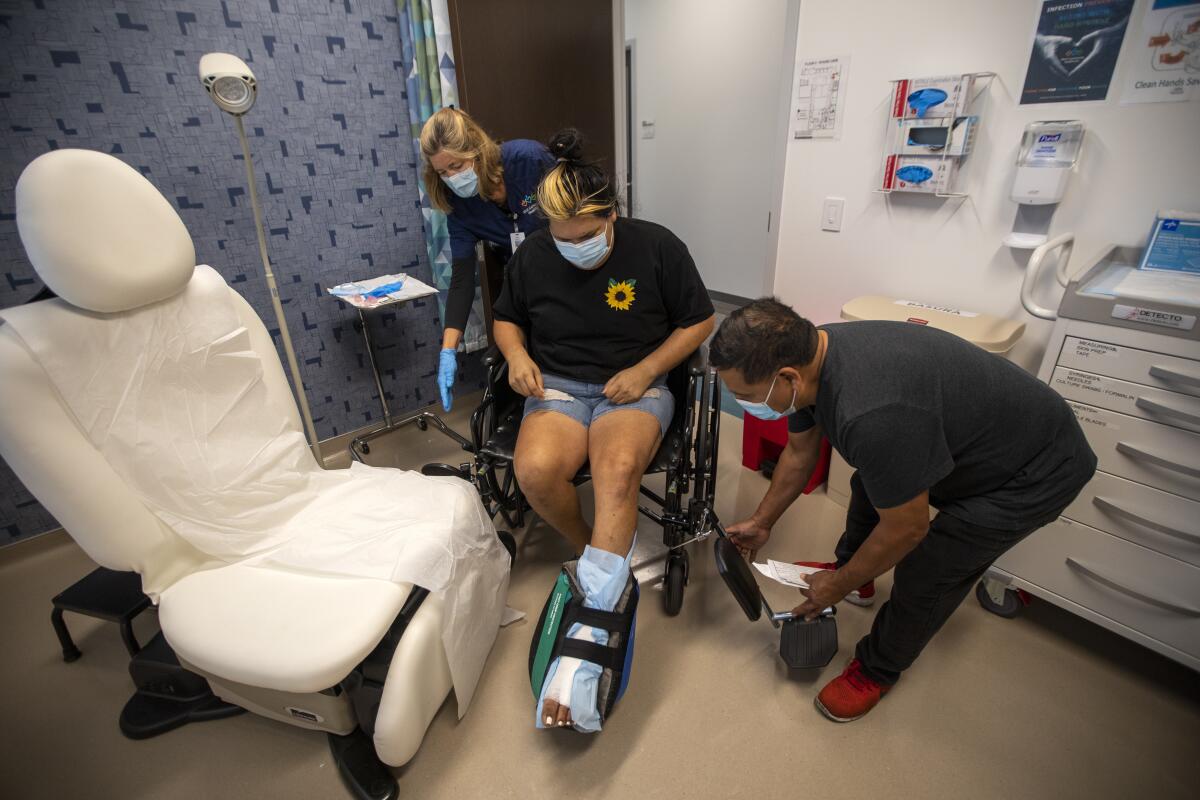
In what officials characterized as the first requirement of its kind in the nation, California ordered Thursday that healthcare workers statewide must be fully vaccinated against COVID-19 come early fall.
The new mandate applies to employees in hospitals, skilled nursing facilities, clinics, doctor’s offices, hospice facilities, dialysis centers and most other healthcare settings, and stipulates that they complete their inoculation regimen by Sept. 30.
“As we continue to see an increase in cases and hospitalizations due to the Delta variant of COVID-19, it’s important that we protect the vulnerable patients in these settings,” Dr. Tomás Aragón, state public health officer and director of the California Department of Public Health, said in a statement. “Today’s action will also ensure that healthcare workers themselves are protected. Vaccines are how we end this pandemic.”
The state also ordered that hospitals, skilled nursing centers and intermediate care facilities must verify that visitors indoors are either fully vaccinated or have tested negative for the coronavirus within 72 hours of their arrival.
California government and healthcare employees will soon be required to show proof they’ve been vaccinated against COVID-19 or be tested regularly.
It was just last week that Gov. Gavin Newsom announced that California healthcare employees would soon either have to show proof of their vaccination status or be subjected to regular testing.
The new order largely removes the testing option and allows only limited religious or medical exemptions from the vaccine requirement.
Employees who are exempted would have to be tested regularly — twice a week if they work in acute or long-term care facilities and once a week in other healthcare settings.
Unvaccinated employees would also have to wear a surgical mask or respirator, such as an N95, while inside a facility.
The L.A. City Council will consider requiring that people show their vaccination status to visit indoor places such as restaurants, stores and gyms.
Thursday’s announcement is the latest in a spate of decisions by public agencies and private employers to require workers either show they’ve been inoculated against COVID-19 or have recently tested negative as a regular part of doing business.
That list includes the state of California, which is making its roughly 246,000 employees show they’ve been vaccinated, with those who remain uninoculated subject to regular testing.
Kaiser Permanente has said it will make vaccines mandatory for all its employees and physicians. And on Wednesday evening, Los Angeles County Board of Supervisors Chairwoman Hilda Solis issued an executive order requiring the county’s 110,000 employees to document their inoculation status by Oct. 1.
Los Angeles County Superior Court, the nation’s largest trial court system, told employees Thursday they could be fired if they aren’t fully vaccinated soon after at least one COVID-19 vaccine receives final government approval.
The increase comes as a growing list of municipalities, businesses and venues are moving to require the shots for employees and, in some cases, customers.
As California contends with the latest coronavirus surge, officials and experts emphasize that the surest way to tamp down transmission is for more people to get vaccinated.
To date, roughly 62% of Californians have received at least one dose and about 54% are fully vaccinated, according to data compiled by The Times.
Though the state’s vaccine pace is well below that seen earlier in the rollout, the cadence of shots going into arms has increased in recent weeks, coinciding with the announcement of new requirements and increased circulation of the highly infectious Delta variant of the coronavirus.
From July 25 to July 31, providers throughout California administered an average of nearly 44,000 first vaccine doses per day — a 41% increase from two weeks ago, The Times’ data show.
Someone is considered fully vaccinated two weeks after receiving their final dose, meaning those who have only recently rolled up their sleeves still have a ways to go before they reach maximum protection.
In the meantime, some counties, most notably Los Angeles, have turned to other measures in hopes of slowing the spread.
L.A. began requiring everyone, even those who are fully vaccinated, to wear masks in indoor public spaces in mid-July — a mandate that has since been replicated in other parts of the state, including much of the Bay Area.
Residents in a large swath of the Bay Area will again need to wear masks indoors, regardless of vaccination status, officials announced Monday.
Though it’s still early, L.A. County Public Health Director Barbara Ferrer said there are promising signs that the mask order may be having the intended effect.
Newly confirmed cases have continued to rise in the region, but the rate of increase has slowed. Ferrer said L.A. County saw a 22% rise in reported cases the week that ended Aug. 1, compared with the prior week; the rest of the state saw a 57% jump.
“One of the big differences between us and other counties was we were the only county at that time that mandated indoor masking,” she told reporters Thursday. “It’s hard to say with 100% certainty that this was the factor that tipped us to have a slightly better slowing of spread than other places, but I know for sure it contributed — just because the data [are] really conclusive on the importance of masking indoors and how that does, in fact, reduce transmission.”
More to Read
Sign up for Essential California
The most important California stories and recommendations in your inbox every morning.
You may occasionally receive promotional content from the Los Angeles Times.
